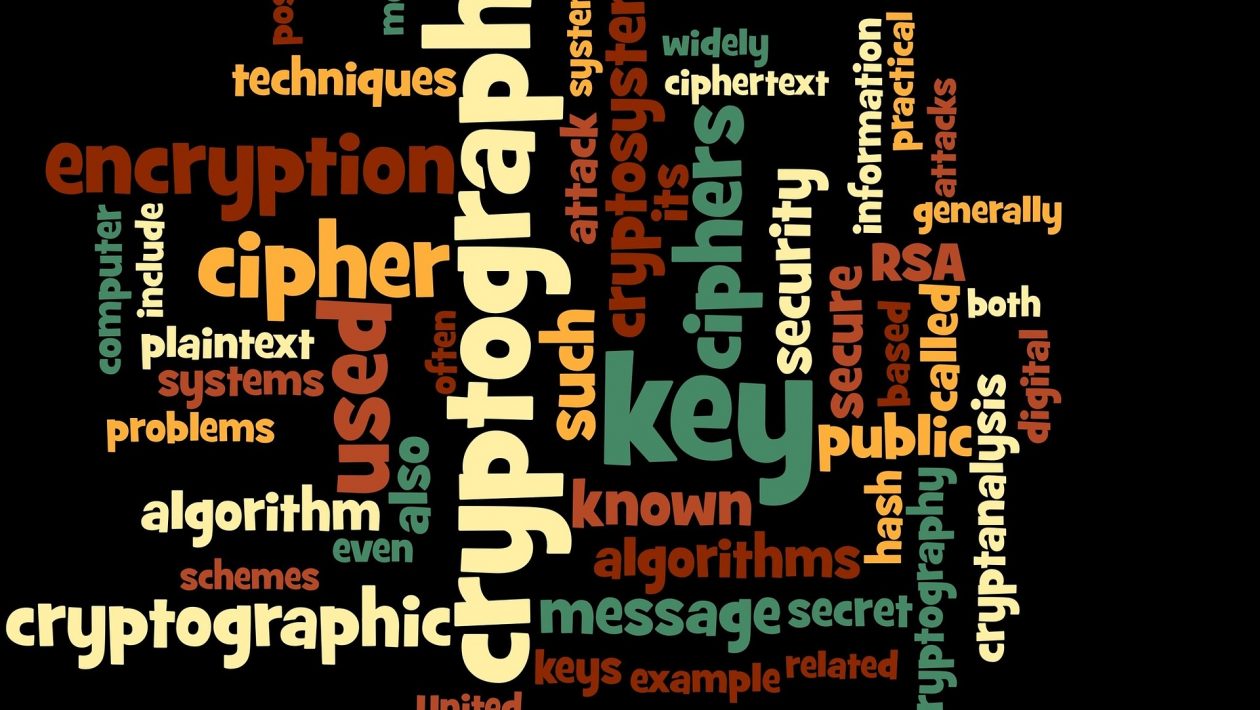In the 21st century, science and technology have come at the forefront. There have been rapid advancements that have led to the invention of exceptional devices and technology. Nowadays, everything is available at the tip of our fingers. Most of us own computers, laptops, and smartphones. Using these devices, we can perform many activities like browsing, shopping, gaming, paying bills, banking, etc. For these activities, we often need to enter personal data like our name, date of birth, address, and other relevant information. This is where the role of cryptography emerges. What is cryptography? Read ahead to find out.
What is cryptography?
Cryptography is a process that ensures security in the transaction of data. Let us simplify the meaning of this. We can understand the meaning of cryptography by breaking down the word “cryptography.” The word “cryptography” is of Greek origin. It is a mixture of two words – “Kryptos” and “graphein.” “Kryptos” means hidden, and “graphein” means “to write”. Combining these two, cryptography is “hidden writing”. Therefore, cryptography involves writing a “hidden” or code language to transfer data securely. Using cryptography, senders can transfer confidential data to receivers without worrying about a possible leak of information.
In this, the sender enters the data in plaintext. Plaintext means the language that humans can easily understand. The plaintext is then encrypted. Encryption refers to the process in which plaintext is converted into ciphertext. In other words, the plaintext is translated into an unreadable language using an algorithm. This converted text is called ciphertext. The receiver obtains the data in the form of ciphertext. By using decryption, the receiver translates the ciphertext back to plaintext. Thus, the receiver can now read the original data.
Elements
Now, let us talk about some of the elements of cryptography. A key is an essential element of the cryptography process. The receiver can convert the ciphertext back to plaintext only by using a key. Therefore, in cryptography, a key is the central feature. Usually, both the sender and the receiver have access to the core. No other individual or third-party can get access to the key. This is how the security system of traditional cryptography works. Let us now understand the latest concepts and elements of cryptography.
Types of cryptography
As discussed above, a key is an essential element in cryptography. An encrypted data can be decrypted only with the help of a key. At times, both the sender and the receiver use the same key to access the data. However, in other cases, there are different keys for encryption and decryption. According to this, there are two types of it. The first type is known as symmetric-key cryptography. The second one is known as asymmetric key cryptography. Some people also include a third category called hash functions. Let us look at all the different types of it.
Symmetric Key
Secret key cryptography is another name of symmetric key cryptography. This is because both the sender and the receiver share a single key. Let us understand the symmetric key with the help of an example. In our example, S is the sender, and R is the receiver. S encrypts the plaintext into ciphertext using the secret key. Afterward, S sends the ciphertext to R. S also sends the secret key to R privately. Using the secret key, R decrypts the ciphertext. Thus, R now has access to the decrypted data. (https://jldancecenter.com/) This is how symmetric key works.
One concern of this method is that the sender has to share the secret key with the receiver. Therefore, he has to be careful while sharing the key so that no third-party has access to it. This method is known as symmetric because the sender and receiver both use the same key. Symmetric key cryptography ensures privacy between two parties – the sender and the receiver. It also ensures confidentiality between the two parties. Data Encryption Standard (DES) and Advanced Encryption Standard (AES) use symmetric key cryptography. This is the traditional form of cryptography. Next, we look at newer ways of it.
Asymmetric Key
Asymmetric key cryptography is a recent development in the field of it. It is also known as public-key cryptography. In asymmetric key cryptography, there are two keys – a public key and a private key. The sender will encrypt their information using a public key and send it to the receiver. The receiver can only decrypt the data using its private key. The private key in asymmetric key cryptography is also known as the secret key. Thus, there is an interplay between the private and the public key.
Asymmetric key cryptography provides more security as both parties already have their keys. Thus, the sender does not need to share the key with the receiver. This reduces the risk of third-party gaining access to the key. Transport Layer Security (TLS) and Secure Sockets Layer (SSL) use asymmetric key. Let us look at the final type of cryptography – hash functions.
Hash Functions
This type of cryptography is different from the previous ones. In hash functions, there is no key. It is an algorithm that uses one-way encryption. In this method, a hash value of the plaintext is derived. There is no recovery of plaintext in this method. The hash value is indicative of the digital footprint of the plaintext. Thus, it maintains integrity. In simpler words, the original data is coded and converted into a hash value. This ensures that no one alters the original data. If anyone manipulates the original information, it will not retain the same hash value. Thus, the owner of the data will come to know that the data has been altered.
Each of these three types of it serves a particular purpose. Some programs may require asymmetric key cryptography, while some websites might use symmetric key cryptography. Therefore, people use different types of cryptography as per the requirements.
Functions
We now know what cryptography is and what are the different types of it. The next question that arises – Why do we need cryptography? It serves various functions. This ensures confidentiality, authentication, integrity, non-repudiation, and key exchange. What do we mean by these terms? Let us look at each feature in detail.
Privacy/Confidentiality
The main purpose of it is to share data securely. This means that apart from the intended recipient, no other person must be able to access it. Cryptography makes sure of this. It originated to maintain privacy and confidentiality of information shared between two parties. Due to it, the data remains confidential, and no third-party can view it. If someone asks – What is cryptography? The first answer that people give is that it is a method of maintaining security and confidentiality.
Authentication
The next function of it is authentication. Authentication means verification of the identity of the person. If a person receives data from someone else, how can he confirm the identity of the sender? The process of authentication takes care of this. When a sender shares data, he has to give authentication of his personality. Thus, when the data reaches the recipient, the recipient can know that it is indeed from the sender and not someone else. Many people share harmful viruses or data, pretending to be someone else. Cryptography and authentication ensure that people steer clear of such data.
Integrity
Another critical function of it is that it maintains the integrity of data. This means that no one can alter or modify the data except the sender and the receiver. A third-party can get their hands on the information if it is shared in a way that is not secure. They may then make changes to the data or modify the data. It helps in preventing this. The integrity of the data remains intact. Therefore, people can share highly confidential and vital data without worrying about its integrity.
Non-repudiation
Non-repudiation stems from the authentication function when it comes to cryptography. Many times it happens that a person denies sharing particular information. In such cases, how can one prove that it was indeed this person who shared the information? In cryptography, the function of authentication verifies the source of data. Hence, the sender cannot deny sending the original data. This is non-repudiation. It is essential as it deals with the legal aspects of data sharing. The sender of the data has to hold himself accountable and cannot deny his involvement. Thus, non-repudiation ensures the validity of the exchange.
Key Exchange
As we have seen in the previous section, cryptography involves the use of a key. In symmetric-key cryptography, the sender shares his key with the receiver. This key is responsible for the process of encryption and decryption. Thus, in symmetric key cryptography, the exchange of key takes place. Hence, the key exchange becomes a function of cryptography. In asymmetric key cryptography, there are two keys, but the key exchange does not occur. Finally, in hash functions, there is no key at all. Since symmetric key cryptography is the earliest form of cryptography, key exchange is a function of cryptography.
Uses
We have now seen what is cryptography, what its types are, and what its functions are. The next important question is – what is cryptography used for? What are the different areas in which this is necessary? Let us see the typical applications of it. Some areas include – secure communication, password protection, digital signatures, electronic cash, and certification. Additionally, secret sharing, security protocols, and zero-knowledge techniques also use cryptography.
Threats
People are relying more and more on technology for essential transactions and communication. This also increases the risk for breach of security and leak of information. The cases of cyber-attacks are on the rise. Hackers manage to override the security systems and get personal details of individuals on the web. How do they manage to do this? What is cryptography got to do with it? Let us discuss this in detail.
As we know, it uses a key for the secure transfer of data. If a third-party can get access to this key, it becomes a threat. Therefore, the sender and the receiver must make sure that the key is not leaked. Another way in which a third-party can breach the security is by cracking the key code. We are aware that the key converts plaintext into ciphertext. However, if a third-party can decode this data, he can get access to the information. In addition to this, other factors like weak keys, incorrect usage, and inadequate protection of keys can also cause harm.
Cryptanalysis
What is cryptanalysis? Is it a part of cryptography? We know that cryptography involves converting data into code for secure transmission. On the other hand, cryptanalysis is the process in which the security system’s weakness is studied. Therefore, using cryptanalysis, people find leaks in an encrypted system. In cryptanalysis, people try to decipher the encrypted data without having access to the key. Cryptanalysis is not always used negatively. At times, cryptanalysts find out weak links in it. After that, cryptographers increase security. Hence, cryptographers and cryptanalysts often work together.
Final thoughts
Cryptography is an ancient method of secret writing. In modern times, we have made use of it for technology purposes. It helps in the safe and secure transfer of data. Additionally, it protects the integrity of data. It also allows for the authentication of data. Some applications of it include online banking, password protection, and data sharing. A sister branch of it is cryptanalysis. Cryptanalysis looks out for weakness in encrypted data. Individuals can get access to encrypted data by cryptanalysis. Generally, cryptanalysts help the cryptographers to strengthen the security system. They find out the leaks in the system. Consequently, cryptographers create a more reliable and more secure method for the data.
Cryptography is a necessary process. As we move ahead with new technology, we must make sure that our data is secure and protected. And this makes that possible.











